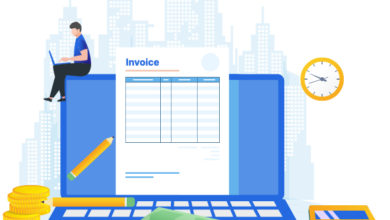Power Of Using Accounting Software With Your Business System

Finance management in the fast-paced modern digital business setup is more than balancing books and tracking expenses. Companies now drive on data, automation, and real-time judgments. One powerful move towards hassle-free financial handling is accounting software consolidation, an activity that integrates accounting devices with other significant business systems.
This convergence is no longer an indulgence of large companies. Small and medium businesses, too, reap significant rewards by bringing disparate operational platforms to their accounting platforms. Be it sales transactions from a point-of-sale application, payroll from human resource software, or stock movement from a supply chain system, synchronization can lead to better financial reporting, less manual intervention, and enhanced business insights.
What is Accounting Software Integration?
Accounting software integration is a term that refers to integrating accounting software with other business platforms and tools. These may include customer relationship management (CRM), enterprise resource planning (ERP), e-commerce platforms, payroll, invoicing, or inventory management applications.
Rather than manually synchronizing data between systems or dealing with isolated information, integration facilitates automatic synchronization. Modifications made in one system will automatically be mirrored in the associated accounting software in real-time, ensuring records remain current and avoiding redundancy.
See also: The rise of athletic sovereignty: Athletes as business entities
Why Does Integration Matter?
1. Minimizes Manual Errors:
Manual data entry is not only time-consuming but also susceptible to human error. With integration, data flows seamlessly (without any hassle) between systems, reducing the risk of errors in tax reports or invoices.
2. Saves Time and Resources:
When systems talk to each other, tasks that involve repetition like uploading invoices, entering customer information, or updating tax details are automated. Employees can then concentrate on strategic activities that provide greater value to the business.
3. Real-Time Insights for Better Decision-Making:
Integration provides access to real-time financial information. Entrepreneurs and finance departments can evaluate profit margins, cash flows, and financials more accurately and efficiently, allowing for on-time decisions.
4. Facilitates Compliance and Audit Readiness:
Correct, centralized financial information makes it easier to maintain compliance with regulations and taxes. Having harmonized records throughout the departments accelerates the review process during an audit.
5. Enhances Collaboration Across Departments:
Accounting information linked to other business systems gives departments like sales, HR, and operations insight into financial performance. This leads to improved collaboration, strategic planning, and coordinated goal-setting.
Typical Integration Points for Accounting Software
1. CRM Systems:
Customer relationship management (CRM) tools can be integrated with accounting software so that customer data, sales invoices, and payment history can be fed into the accounting software. This enhances invoice tracking, customer follow-ups, and overall financial forecasting.
2. HR and Payroll Systems:
When payroll information is fed directly into the accounting system, salaries paid, tax withholdings, and employee reimbursements are accounted for immediately and accurately.
3. E-commerce Sites:
For companies operating online shops, connecting e-commerce websites to accounting software automatically records order entries, marks inventory in real-time, and keeps revenue tracked accurately.
4. Inventory Management:
An integrated inventory system enables the tracking of product levels, costs, and valuations within the accounting software. This reduces the risk of overstocking or understocking and enhances cost control.
5. Expense Management Tools:
Integration of expense reporting tools enables employee expenses to be captured, categorized and reimbursed effectively. It also facilitates compliance with company policies.
Challenges in Integration
Though integration has numerous benefits, it also has challenges if not well planned.
- Compatibility Problems: Not all software systems are created to work together straight away. Selecting platforms that embrace open APIs or have pre-integrated options can simplify this.
- Security Risks: Interfacing data across systems enhances the possibility of data breaches unless good encryption and access controls are established.
Best Practices for Successful Integration
- Begin with a Clear Goal: Know what you want to accomplish, whether it’s automating manual processes, enhancing report accuracy, or accessing real-time information.
- Select Scalable Systems: Choose tools that can grow with your business. Scalability guarantees long-term value.
- Collaborate with IT Professionals: Either in-house or outsourced, technical assistance during the integration process guarantees smooth transfer.
- Test Before Deployment: Conduct a pilot integration to determine and resolve potential issues prior to complete deployment.
- Train Your Staff: Make sure employees know how the new integrated system operates and how to effectively utilize it.
Conclusion
In a digital-first business environment, accounting software integration is not just a nicety — it’s a competitive edge. It adds efficiency, accuracy, and transparency to your financial operations. As companies continue to look for smarter, faster, and more connected solutions, integrating accounting software with core systems is a critical step toward operational excellence.





